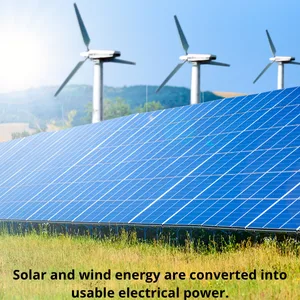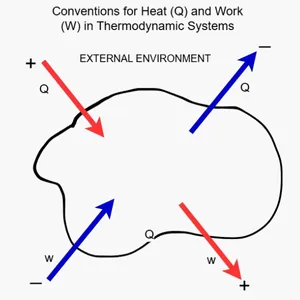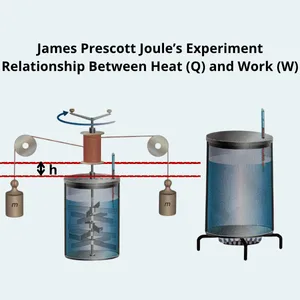Engineering Approach to Thermodynamics

The First Law of Thermodynamics—also called the Principle of Energy Conservation—states that energy can neither be created nor destroyed, only transformed or transferred.
This article focuses on the First Law of Thermodynamics, as it plays a fundamental role in all branches of engineering.
In fact, in modern engineering, this principle extends far beyond classical heat-to-work conversion, encompassing a wide range of energy transformation processes.
It governs energy balances across chemical reactions, electrical circuits, mechanical operations, and even biological systems.
Just to cite an example, in systems like solar panels and wind turbines, solar radiation and wind kinetic energy are transformed into usable electrical power—a practical demonstration of the First Law of Thermodynamics in engineering.
Thermodynamics 1st law
The First Law of Thermodynamics is represented by the following mathematical equation:
ΔU = Q – W
It reflects three essential concepts:
– It postulates the existence of an internal energy function (U).
– It confirms the definition of heat as a form of energy in transit, since it can turn into work and vice versa.
– It represents the most general formulation of the principle of energy conservation.
The adjacent figure shows a classic representation of a thermodynamic system.

It illustrates the sign conventions for heat (Q) and work (W) in relation to the external environment.
Heat (Q) is considered positive when the system absorbs heat, and negative when it releases heat to the surroundings.
Work (W) is considered positive when the system performs work on the surroundings, and negative when it receives work from the surroundings.
The Joule Experiment
(applying the Thermodynamics 1st Law)
Let’s now consider a non-cyclic process, in which a system undergoes a transformation and reaches a final state different from the initial one.
For example:
A transformation that raises the temperature of 1 kg of water from 15 °C to 100 °C.
This change can be achieved in different ways, using various methods or devices.
The simplest way is to heat the water directly. Alternatively, the same temperature increase can be achieved by placing the water in Joule’s device and letting it absorb energy through mechanical work.

The figure illustrates James Prescott Joule’s famous experiment, which demonstrated the relationship between mechanical work and heat.
As the weights fall, they turn paddles immersed in water.
This motion transfers mechanical energy to the water, converting it into thermal energy and raising the water’s temperature.
Since two different physical methods produce the same temperature change (ΔT), this demonstrates the principle of equivalence: mechanical work and heat are two interchangeable forms of energy.
Through precise measurements, Joule demonstrated that 4.186 joules of mechanical work are equivalent to 1 calorie.
Both produce the same effect: raising the temperature of 1 gram of distilled water at 1 atm from 14.5 °C to 15.5 °C, i.e., a variation of 1 °C.
The Joule experiment shows that while Q and W depend on the specific transformation carried out, the difference between Q and W is independent of it.
This leads to the introduction of a state function, denoted as U, which depends only on the initial and final states of the system. Its variation, ΔU=U2-U1, represents the net energy change and is independent of the path taken.
ΔU = Q – W (1)
where:
- ΔU is the change in internal energy of the system,
- Q is the heat exchanged with the surroundings (positive if absorbed by the system, negative if released),
- W is the work exchanged with the surroundings (positive if done by the system, negative if done on the system).
From this, it follows that the first law of thermodynamics can be stated as follows:
Regardless of the process, the chemical composition of the system, or the way heat or work is exchanged with the surroundings, the algebraic sum of Q and W depends only on the initial and final states of the system—not on the particular transformation—and equals the corresponding positive or negative change in internal energy.
One of the consequences of this equation is that, in order to produce work continuously, a system must operate cyclically.
Returning to its original state allows it to repeat the process and generate work again.
Perpetual Motion Machine of the First Kind (PMM1)
Based on the logical analysis of equation (1), it is possible to state the technical and conceptual impossibility of a Perpetual Motion Machine of the First Kind (PMM1)—a hypothetical device capable of delivering continuous work output without any energy input.
In fact, if a machine were to produce work without absorbing heat (i.e., with Q = 0), the First Law of Thermodynamics would give:
ΔU = –W
And if ΔU = 0, then:
0 = –W ⇒ W = 0
Therefore, no work can be produced without energy input, confirming the impossibility of PMM1.
Common Energy Transformations in Industrial Systems
Chemical Energy
Stored in fossil fuels like oil or gas. This is the energy contained in the molecular bonds of the fuel.
Thermal Energy
When the fuel is burned, its chemical energy is converted into thermal energy (heat), which is used to produce steam.
Mechanical (Kinetic) Energy
The steam spins a turbine, converting thermal energy into mechanical energy (rotational motion).
Electrical Energy
The turbine drives a generator that converts mechanical energy into electricity.
Sound Energy (or other outputs)
The electrical energy powers devices—like a guitar amplifier—that transform electricity into mechanical vibrations and ultimately into sound.
Other Fundamental Principles of Thermodynamics
After understanding the First Law, which states that energy is conserved and can change form, it is essential to briefly recall the other three laws that complete the foundation of thermodynamics.
Zeroth Law of Thermodynamics
The Zeroth Law of Thermodynamics defines the concept of temperature. It states that if two systems are in thermal equilibrium with a third system, then they are also in thermal equilibrium with each other. This logical principle forms the basis for using thermometers and comparing temperatures.
Second Law of Thermodynamics
The Second Law of Thermodynamics introduces the concept of entropy and explains the direction of natural processes. It states that in any real process, the total entropy of a system and its surroundings always increases. In practical terms, it means that not all the energy in a system can be converted into useful work. For example, heat flows spontaneously from a hot body to a cold one, never the reverse.
Third Law of Thermodynamics
The Third Law of Thermodynamics concerns the behavior of systems at extremely low temperatures. It states that as a system approaches absolute zero (0 K), the entropy of a perfect crystal tends to zero. This law defines an absolute reference point for entropy and helps to understand the limits of cooling processes.
Ing. Ivet Miranda
Looking to Build a Stronger Foundation in Chemical Engineering? Start Here:
- What Is Distillation and How It Works in Real Industrial Processes
- Chemical Engineering Guide: 14 Useful Topics for Beginners
- Unit Operations: A Practical Introduction for Engineers
- The 4 Safety Management System Pillars Explained in Detail
- What Does a Chemical Engineer Do?
- 5 Key Differences: Rupture Disc vs Relief Safety Valve
- What is the Process of distilling Water, Alcohol and Oil?
FAQ
What is a thermodynamic system?
A thermodynamic system is a defined portion of matter or space selected for analysis, where energy exchanges (in the form of heat or work) are studied. Everything outside the system is considered the surroundings.
To understand this in context, scroll up to the section titled “First Law of Thermodynamics”.
What is thermodynamic equilibrium?
It’s the state in which no net flow of energy occurs within the system or between system and surroundings—mechanical, thermal, and chemical balances are all satisfied.
What is thermodynamics in physics?
It’s the branch of physics that studies heat, energy, and work, and how these quantities behave in different systems.
What is thermodynamics in biology?
Thermodynamics in biology explains how energy is produced, transferred, and used in cells—like in ATP production and metabolic pathways.
What is thermodynamics with example?
Thermodynamics is the science that studies how energy is transferred and transformed, especially in the form of heat and work. A classic example is Joule’s experiment, which showed the equivalence between mechanical work and heat.
To understand this in context, scroll up to the section on Joule’s experiment above.
What is a thermodynamic cycle?
It’s a series of processes in which a system returns to its initial state. Examples include the Carnot and Rankine cycles in engines.
What is thermodynamics used for?
It’s used in engineering, chemistry, biology, and environmental science to model energy efficiency, engine performance, reactions, and more.
What are the four laws of thermodynamics for engineers?
The four laws – Zeroth, First, Second and Third – define temperature equilibrium, energy conservation, entropy behaviour and the entropy limit at absolute zero. Together they set the theoretical boundaries for every engineering process.